Why it works
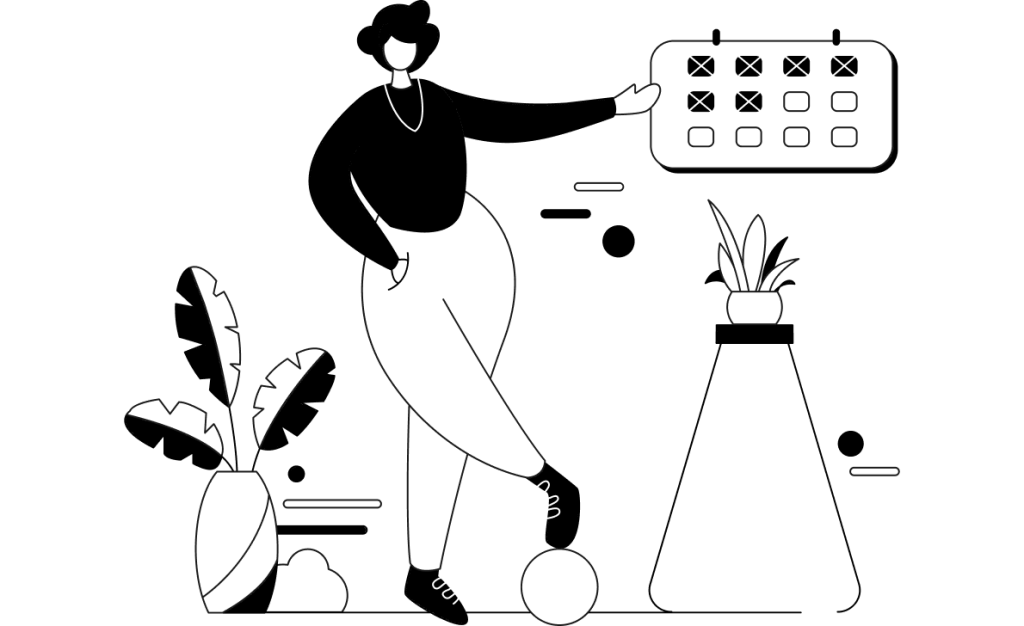
Easy input is built by my frustration with other learning tools and finding out what actually helps.
Instead, you were immersed in a world where you could both hear and see language everywhere – from bedtime stories read aloud to subtitled cartoons on TV.
Your brain naturally connected the dots between what you heard and what you saw.
This natural learning process was effortless and effective. You absorbed vocabulary without studying. You developed perfect grammar without rules. You learned to understand native speakers without translation.
By age four, you were already fluent in complex language patterns that most adult language learners struggle to master after years of study.
So why do we abandon this natural approach when learning a new language?

The answer is simple but troubling: our education system prioritizes standardized testing over real language acquisition. Schools and courses and many apps need measurable results, so they break language into testable components – grammar rules, vocabulary lists, and fill-in-the-blank exercises.
This artificial approach ignores decades of research showing how languages are actually acquired.
Research has proven that our adult brains still retain the ability to learn languages naturally. But instead of leveraging this innate capability, traditional language education forces us into ineffective methods that work against our brain’s natural learning processes.
It’s driven by business needs, not learning effectiveness.
Think about it – who would pay for a class where the teacher says “just read these books and listen to audio”?
Schools and language programs need to appear to be “teaching” something concrete to justify their fees. So they create complex lesson plans, grammar drills, and vocabulary exercises – methods that feel like learning but actually work against your brain’s natural acquisition process.

Traditional language education is fundamentally broken. You already know this if you’ve ever:
The statistics are shocking: after years of language study, less than 10% of students achieve functional fluency. But here’s what’s even more surprising: it’s not because we don’t know how to teach languages effectively.
Over the past 40+ years, researchers like Dr. Stephen Krashen have clearly shown why traditional language education fails and what actually works. The science of language acquisition is well understood. So why aren’t we doing better?
Several factors keep language education stuck in ineffective methods:
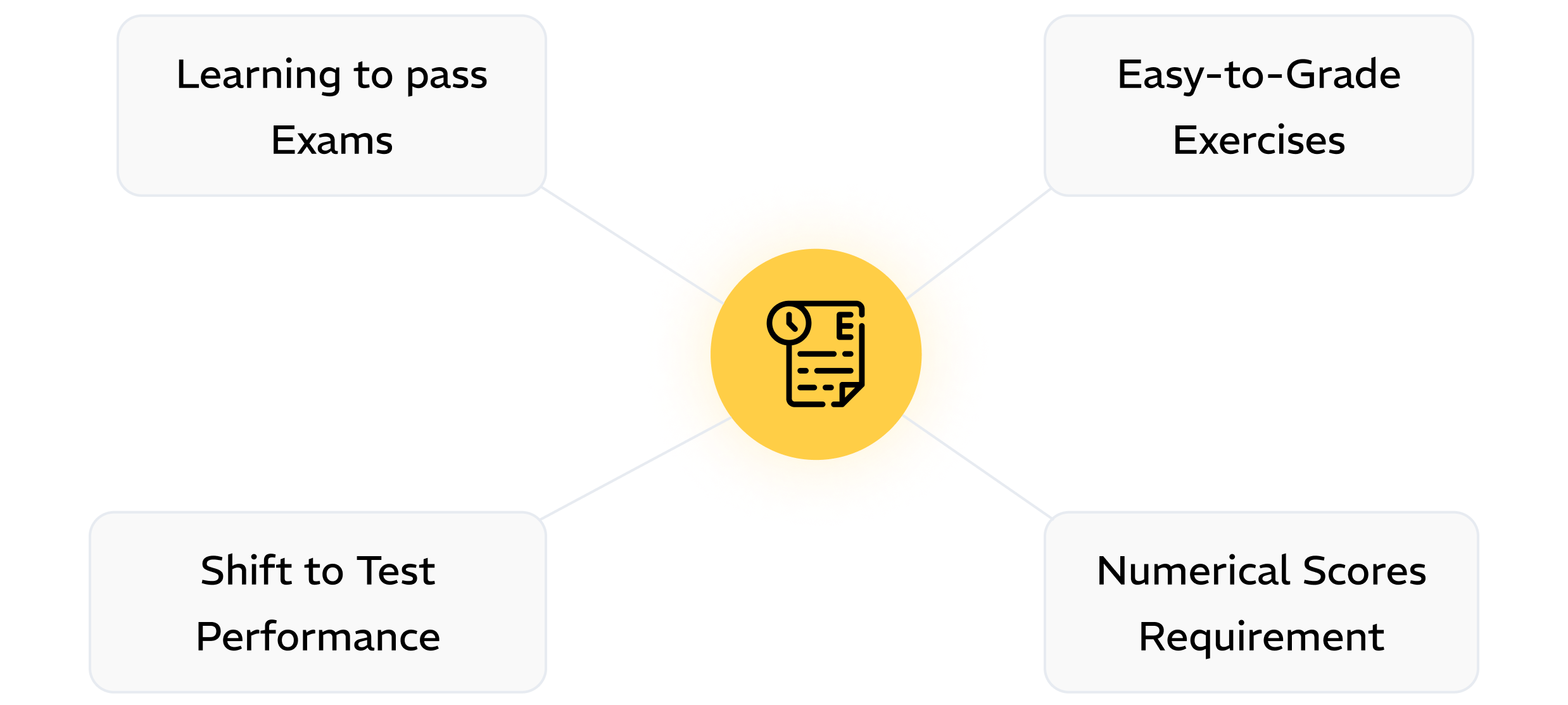
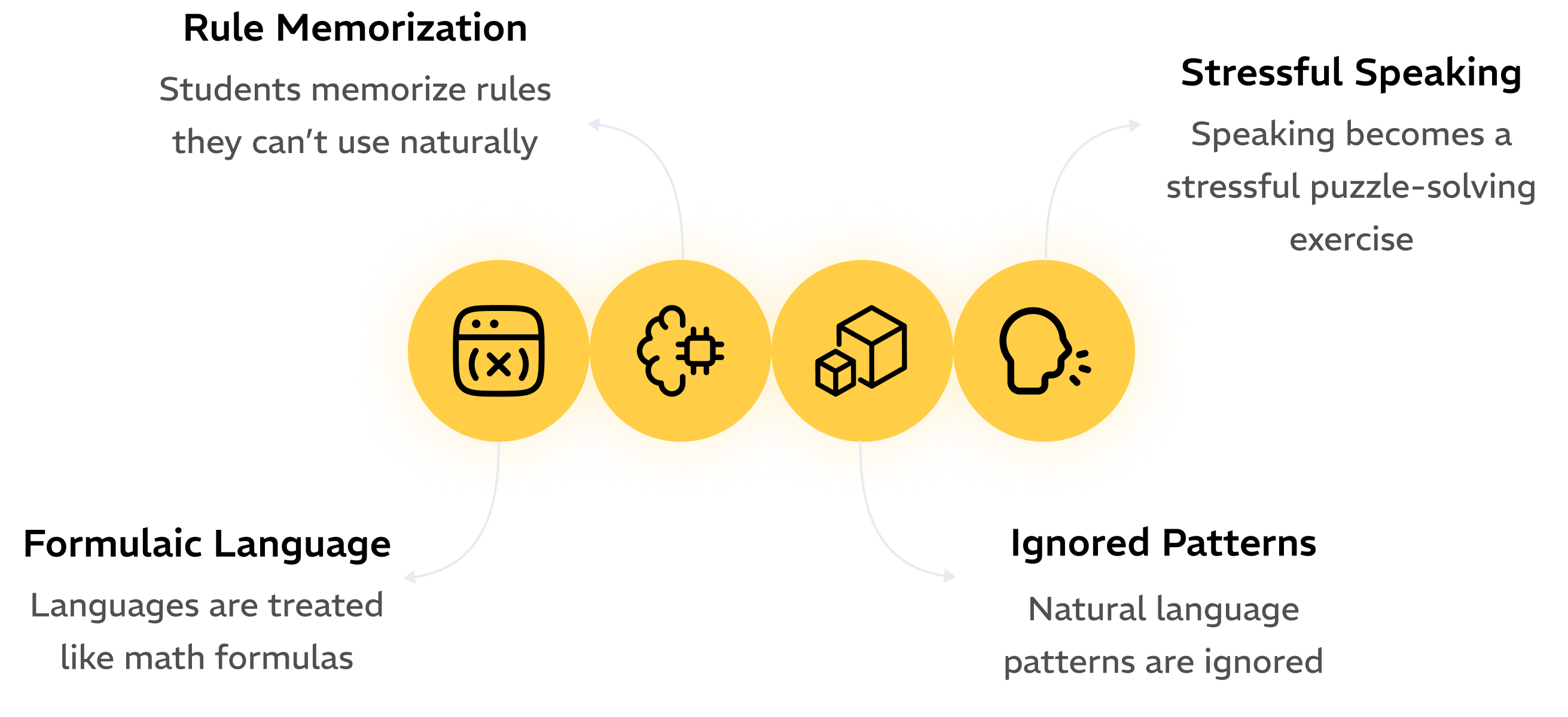
This broken system doesn’t just waste time and money – it crushes motivation and convinces people they’re “bad at languages.” Many give up, believing they lack some special talent for language learning.
But here’s the truth: you already proved you’re excellent at learning languages when you mastered your native tongue. You did it through natural input, not through grammar drills or vocabulary lists.

I discovered this reality firsthand. I’m not a polyglot – I just wanted to learn one language well. After trying countless apps, classroom courses, and private tutors, I found myself frustrated with the disconnect between traditional methods and how we naturally learn.
This led me down a rabbit hole of research papers and studies about language acquisition (and hanging out on Reddit for an unhealthy amount of time).
What I discovered was eye-opening: our brains are already wired for language learning, but most methods fight against this natural ability instead of working with it.
I couldn’t have a conversation and consult a grammar table mid-sentence, so mass input and natural absorption made perfect sense to me.
Through my journey, I discovered three crucial things:
Multiple studies have shown remarkable results when learners have access to the right input at the right level:
Research shows that all forms of comprehensible input help you learn:
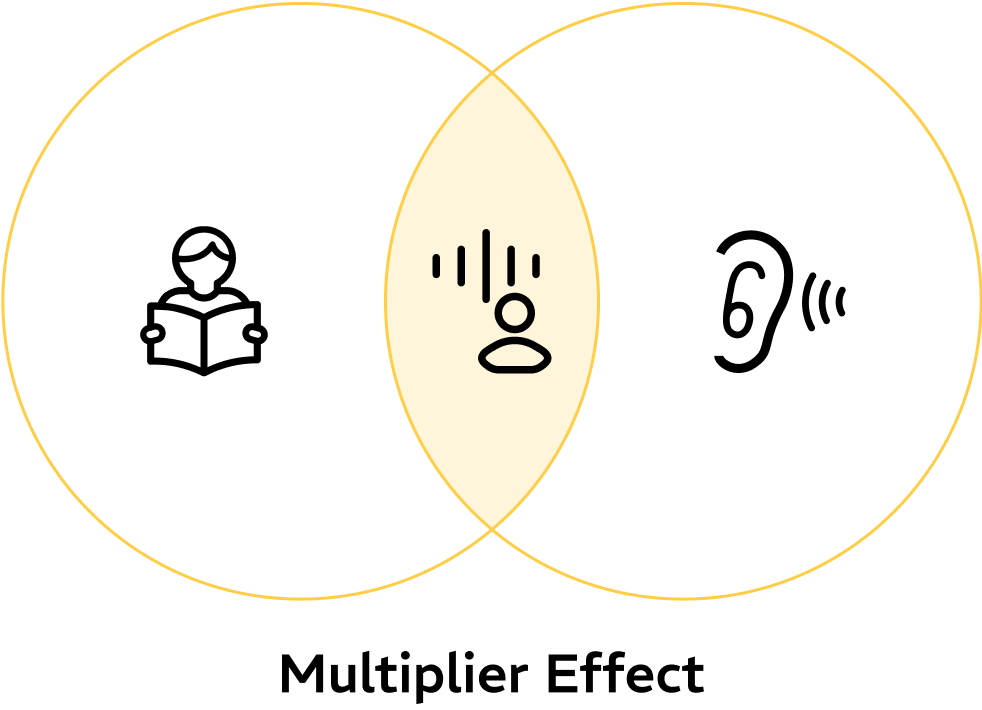

When you combine reading and listening, research shows remarkable synergies:
Multiple studies have shown that combining reading and listening creates a powerful synergy:
As one researcher noted: “The aural-written verification of reading while listening has been found to be particularly
beneficial to lower proficiency learners.” In other words, this method works whether you’re just starting or trying to break through to advanced levels.
Research has uncovered something fascinating:
When we combine reading and listening – just like we did as children – remarkable things happen:
Research from multiple universities has revealed exactly why Reading While Listening works so powerfully:
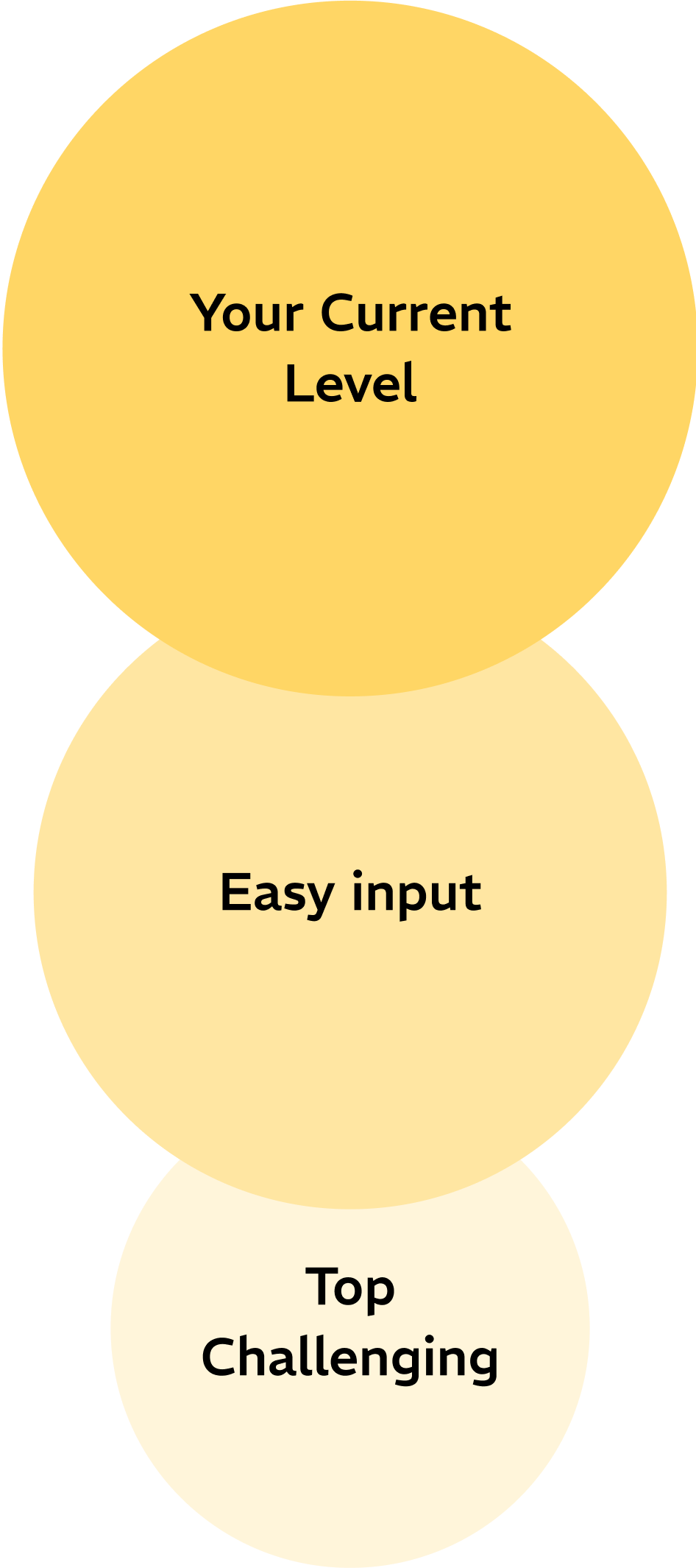
Research shows RWL activates multiple learning pathways in your brain:

Research group monitored 7 high school students using RWL for 26 weeks:

Research with 139 university students showed:

Independent learners using RWL reported:
Research shows RWL activates multiple learning pathways in your brain:
Research shows RWL activates multiple learning pathways in your brain:
By combining reading and listening, you experience language the way native speakers do. This natural approach helps your brain make connections more effectively and retain information longer.
Research shows that when you engage both visual and auditory processing simultaneously, you create stronger neural pathways. As Chang (2009) discovered, learners achieved 10% better comprehension when using RWL compared to listening alone.
Unlike traditional methods requiring conscious effort to improve different skills separately, RWL naturally develops multiple language abilities simultaneously:
The evidence for RWL’s effectiveness is overwhelming. Here’s what multiple research studies have found:
In a comprehensive 26-week study:
Research shows that RWL learners:
As one researcher noted, “Combining reading and listening is particularly effective because it helps learners process spoken language in real time while reinforcing visual word recognition.”
As one student reported: “I used to struggle with understanding native speakers, but after using RWL, I can follow conversations much more easily. The improvement in my listening skills has been incredible.”
Who Benefits Most from Easy Input?
1. Build a strong foundation
2. Develop natural pronunciation
3. Acquire vocabulary effectively
1. Break through plateaus
2. Improve listening fluency
3. Expand vocabulary rapidly
1. Perfect pronunciation
2. Master natural speech patterns
3. Enhance academic language skills
1. Maximize limited study time
2. Learn during commutes
3. Develop practical language skills
No complex methods. No tedious drills. Just natural, effective language acquisition.
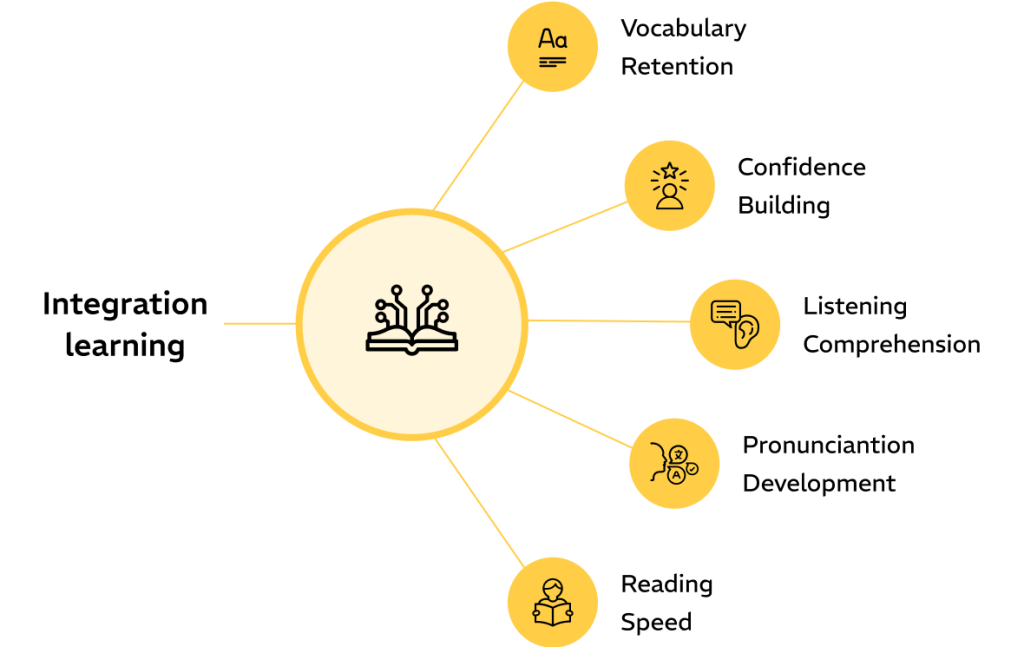
As Brown et al. (2008) found, “Students learned most words in the RWL mode, followed by reading only and then listening only.” This superior effectiveness extends across all aspects of language learning.
Begin your transformation with these easy steps:
This method is supported by extensive academic research, including: